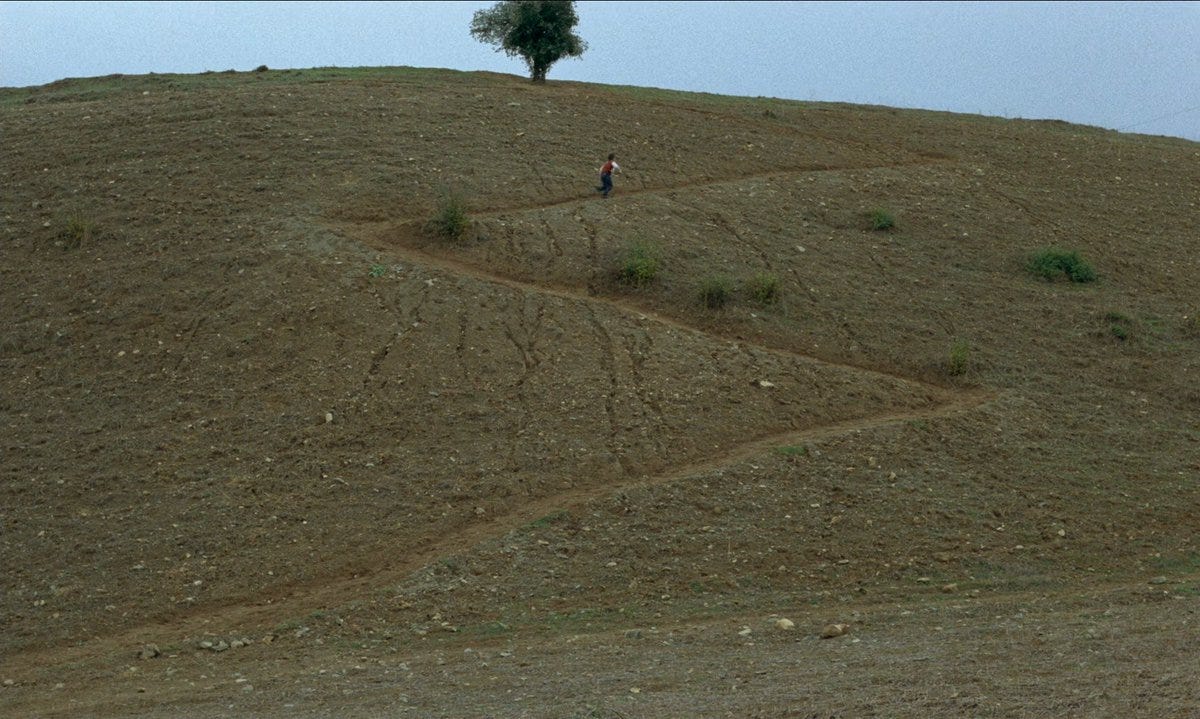Join us on Sunday the 17th of March from 11:30am in the Richard Hoggart Building cinema for a special, all-day screening of Abbas Kiarostami’s Koker trilogy, which we will be screening from the 2K digital restorations on the Criterion Collection’s BluRay release.
The schedule for the day is:
11:30am: doors open
12:00pm: Where Is the Friend’s Home? (1987), 83 minutes, finishing at 1:25pm
2pm: And Life Goes On (1992), 95 minutes, finishing at 3:35pm
4pm: Through the Olive Trees (1994), 103 minutes, finishing at 5:45pm
Abbas Kiarostami is Iran’s most celebrated filmmaker. On his death in 2016, Sight and Sound said:
Reframing the world and the relationships between individuals through both his creative involvement with actors – often amateurs, often children – and his eye for the beauty of landscapes, Kiarostami produced philosophical works that reinvigorated the genres of documentary and narrative fiction, often blurring the lines between the two, as best shown in Close-up (1990). He translated the traditions of oral storytelling and epic poetry, as well as the modesty of Persian architecture, into a distinctive screen vision, and from the 1990s onwards his model for creating substantial works on slender resources was recognised and embraced by filmmakers from Asia to South America.
On the Koker trilogy, see Godfrey Cheshire’s essay to accompany the Criterion release:
“In 1986, having made a number of child-centered films in his position as the head of the filmmaking division at Iran’s Center for the Intellectual Development of Children and Young Adults (an organization Iranians call Kanoon), Abbas Kiarostami accepted a government official’s urging to direct a script he’d written but intended for another director. Where Is the Friend’s House?, about a boy’s effort to return a schoolmate’s notebook, was shot in and near Koker, a village two hundred miles northwest of Tehran. The film won two prizes on premiering at Iran’s Fajr Film Festival in 1987, and received international acclaim when it played at the Locarno Film Festival in 1989, winning a Bronze Leopard and four other awards. It was the first dramatic feature Kiarostami had made since the Iranian Revolution a decade before.
A year later, on the eve of Kiarostami’s fiftieth birthday in June 1990, an earthquake devastated the area around Koker, killing fifty thousand people, including twenty thousand children. Wanting to find out the fates of the local kids who had appeared in Where Is the Friend’s House?, he made a difficult journey by car through the stricken area with his eleven-year-old son, Bahman. When he later told an audience in Germany about the trip, someone suggested he turn the story into a film. Kiarostami took the advice and in the following months returned to the area to film And Life Goes On (a.k.a. Life, and Nothing More), with two nonactors playing characters modeled on himself and his son.
That film generated yet another. While shooting a four-minute scene in And Life Goes On in which the director observes a young man getting a chilly response from a girl with whom he’s playing a scene, Kiarostami saw that the tension between the two nonactors was real. Their relationship became the dramatic kernel of Through the Olive Trees, a film about the making of And Life Goes On, with the man who played the director of Where Is the Friend’s House? reprising that role and a prominent actor playing the director of And Life Goes On. Both And Life Goes On and Through the Olive Trees made their international debuts at the Cannes Film Festival (in 1992 and 1994, respectively) and elevated Kiarostami to the front ranks of world auteurs, paving the way for his triumphant win of Cannes’s Palme d’Or with his next film, Taste of Cherry (1997).
As that history indicates, the three films were not planned as a trilogy but rather emerged as one organically. While Kiarostami did not readily embrace the term The Koker Trilogy, a designation used by critics, his reluctant acceptance of it was perhaps inevitable. For seen separately, each film is masterful and easily stands on its own. Yet considered together, they possess a unique power and inexhaustible fascination. As such, they exemplify a striking characteristic of Kiarostami’s artistic creations overall: their profound integrality, the sense that one work connects with others in ways that are complex, suggestive, and often more subtle than overt.
Although each of the films possesses distinct aims and qualities that set it apart from the others, they also share a number of attributes that link them to other Kiarostami films: a humanistic outlook and stories that involve some sort of quest; a poetic articulation of visual space; a sense of drama that is carefully structured yet also relaxed and sometimes digressive in its unfolding; a keen appreciation of faces and personal characteristics, which accords with the director’s extraordinary skills directing nonactors, especially young ones; and a feeling that the films’ meanings are multilayered, with the surface significance of the basic narrative overlaying metaphorical associations that can be personal or political, philosophical or mystical.”
For more, see the BFI’s guide ‘Where to begin with Abbas Kiarostami’ (which recommends the Koker trilogy as the best place to start).


